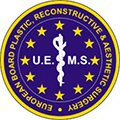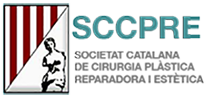
WHAT IS A LIFTING?
Rhytidectomy or cervico-facial lifting is the intervention that allows to modify some of the signs of aging that appear over time on the face and neck.
Some of these signs of aging are: the folds between the mouth and the nose are accentuated, the mandibular edge loses definition and the neck increases its flaccidity.
The main causes in addition to the passage of time are the effect of gravity, sun exposure and daily stress, aggravated by tobacco and alcohol consumption.
WHO IS A GOOD CANDIDATE FOR IQ?
The best candidates are those men and women whose skin has started to sag but still maintains a good degree of elasticity.
It is important to note that a facelift cannot correct periorbital wrinkles (“crow’s feet”) or perioral wrinkles (“barcode”), for these locations we will need to perform other treatments.
WHAT IS VALUED ON THE FIRST VISIT?
The first visit is the main step for the patient who has considered the possibility of undergoing a facelift.
Some of the characteristics that are evaluated during the consultation are:
– Medical and surgical history.
– Regular medication.
– Elasticity and quality of the skin of the face and neck.
– Signs of aging.
– Sun damage.
– Location of any existing scar.
WHAT SHOULD I TAKE INTO ACCOUNT BEFORE THE INTERVENTION? PREOPERATIVE RECOMMENDATIONS
There are a few considerations to keep in mind:
– Avoid certain medications that may complicate the intervention.
– Quit smoking for a period of time, before and after the intervention, since tobacco has been shown to worsen and hinder wound healing.
– Keep in mind that you will need some help after the intervention.
WHAT SHOULD I TAKE INTO ACCOUNT AFTER THE INTERVENTION? POSTOPERATIVE RECOMMENDATIONS
Some recommendations include:
– Avoid tobacco.
– Take the prescribed postoperative medication.
– Relative rest of one week.
– Use a compression band for a postoperative period of time.
HOW IS A LIFTING PERFORMED?
The intervention basically consists of tightening the muscle layers and the skin, removing the excess tissue. It is important to note that the technique must be individualized for each patient.
Currently there are many ways to perform a facelift, in which there are differences in the location and length of the scars, but usually the incision begins in the area of the temples (inside the hair), extends within the natural lines that exist in front of the ear and continues around the lobe, behind the ear and scalp.
WHERE IS THIS INTERVENTION PRACTICED?
In most cases, this intervention is performed under general anaesthesia, and requires hospital admission for 1 day. In some patients it can be performed under sedation and local anaesthesia, and you can go home the same day. The duration of the surgery is about 3 hours in total.
WHAT IS THE EVOLUTION AND POST-INTERVENTION CONTROLS?
Although each patient has their own particularities, the postoperative course contains phases common to all patients:
After the intervention
You will need to wear a compression bandage to decrease inflammation.
You will need to keep your head elevated for a few days and apply local cold frequently to reduce inflammation and prevent bruising.
During the first week:
The stitches will be removed between 5 and 7 days after the intervention. Then the bruises and swelling will decrease and you will start to feel and look much better.
You will not need to wear the compression garment any longer.
During the second week:
You can rejoin working life, being able to put on some makeup in case a bruise has appeared.
At 4 postoperative weeks:
You will be able to start exercising gradually.
After several months
Over the months the scars will become almost invisible fine lines.
WHAT SHOULD I KNOW ABOUT THE RESULTS?
In general, the results of rhytidectomy are very long-lasting. Healing is a gradual process and the scars, while they may initially appear pink, will become almost invisible fine lines over the months. For many people the results are permanent.
ARE THERE CONTRAINDICATIONS FOR THIS SURGERY?
Each case must be assessed individually. Still, possibly the main contraindication for this surgery are heavy smokers who do not plan to interrupt the habit.
CAN IT BE COMBINED WITH OTHER SURGERIES?
The facelift as an intervention can be performed alone or in combination with other facial surgeries such as fat transfer, rhinoplasty or blepharoplasty.
WHAT IS A MINIFACELIFT?
A minifacelift is a procedure that is performed under local anaesthesia and sedation, or general anaesthesia, which allows, through short scars and little dissection, to reposition the sagging structures. It is ideal in patients with initial signs of aging. This surgery is less aggressive and has a faster recovery.



